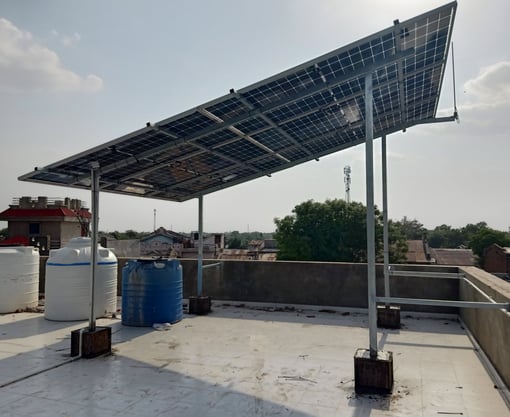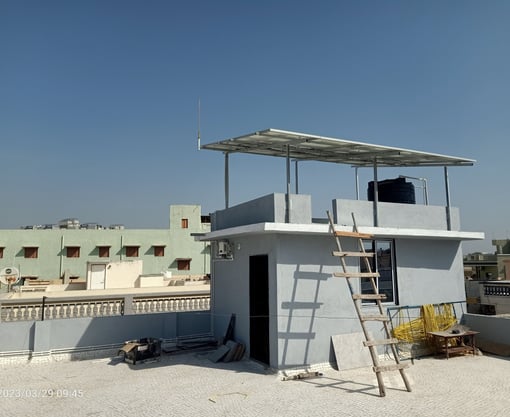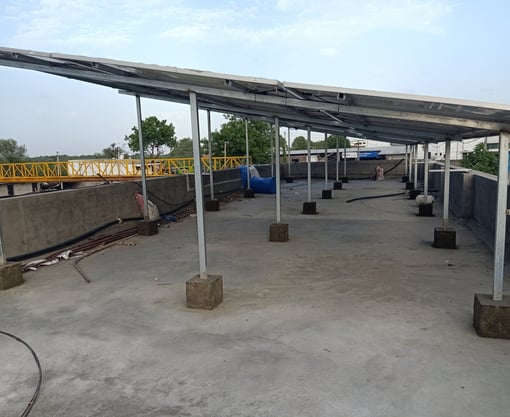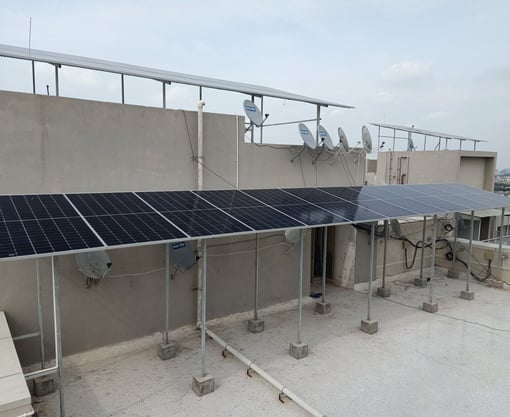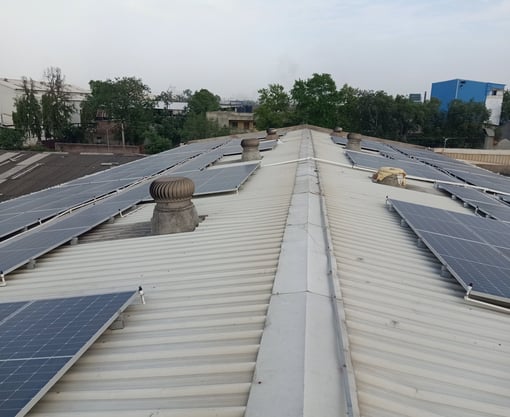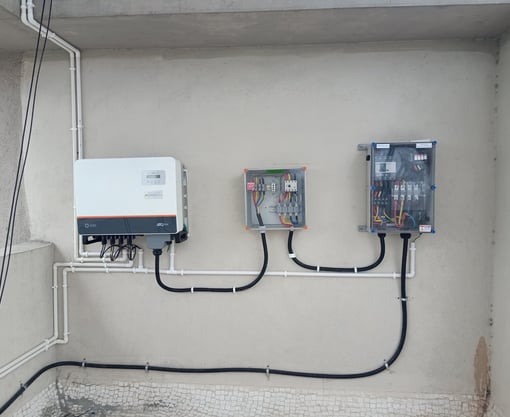Solar Rooftop
Solar rooftop systems, also known as rooftop solar photovoltaic (PV) systems, are installations of solar panels on the roofs of residential, commercial, industrial, or institutional buildings. These systems harness sunlight to generate electricity, offering a sustainable and renewable energy solution. Here's a detailed description of solar rooftop systems:
Solar Panels:
Solar rooftop systems consist of solar panels, which are made up of photovoltaic cells that convert sunlight into direct current (DC) electricity. These panels are typically made from crystalline silicon or thin-film technologies.
Inverter:
The DC electricity generated by the solar panels is converted into alternating current (AC) electricity by an inverter. AC is the standard form of electricity used in homes and businesses.
Mounting Structure:
Solar panels are mounted on a structure that is affixed to the rooftop. This structure is designed to support and secure the solar panels while optimizing their exposure to sunlight for maximum energy production.
Metering System:
Solar rooftop systems are often integrated with a metering system to monitor the amount of electricity generated. Net metering allows users to measure the difference between the electricity generated by the solar panels and the electricity consumed from the grid.
Grid Connection:
Most solar rooftop systems are connected to the electrical grid. When the solar panels generate more electricity than is needed on-site, the excess power can be fed back into the grid, often earning credits or compensation for the system owner.
Monitoring and Control Systems:
Modern solar rooftop systems often come with monitoring and control systems that enable users to track the performance of the system in real time. This includes information on energy production, system efficiency, and potential issues.
Financial Incentives:
Many governments and local authorities provide financial incentives to encourage the installation of solar rooftop systems. These incentives may include tax credits, rebates, and feed-in tariffs, making solar energy more economically attractive.
Environmental Benefits:
Solar rooftop systems contribute to environmental sustainability by reducing reliance on fossil fuels and lowering greenhouse gas emissions. They help combat climate change and promote a cleaner, greener energy future.
Customization and Scalability:
Solar rooftop systems can be customized based on the energy needs of the building. They are also scalable, allowing owners to expand the system if energy demands increase.
Installation and Maintenance:
Installation of solar rooftop systems requires careful planning and expertise. Once installed, they generally have low maintenance requirements, with periodic checks on the condition of the panels and other components.
Solar rooftop systems play a crucial role in the transition to renewable energy, providing a decentralized and distributed power generation solution. They are suitable for a wide range of applications, from residential homes to large industrial and commercial facilities, contributing to a more sustainable and resilient energy infrastructure.
